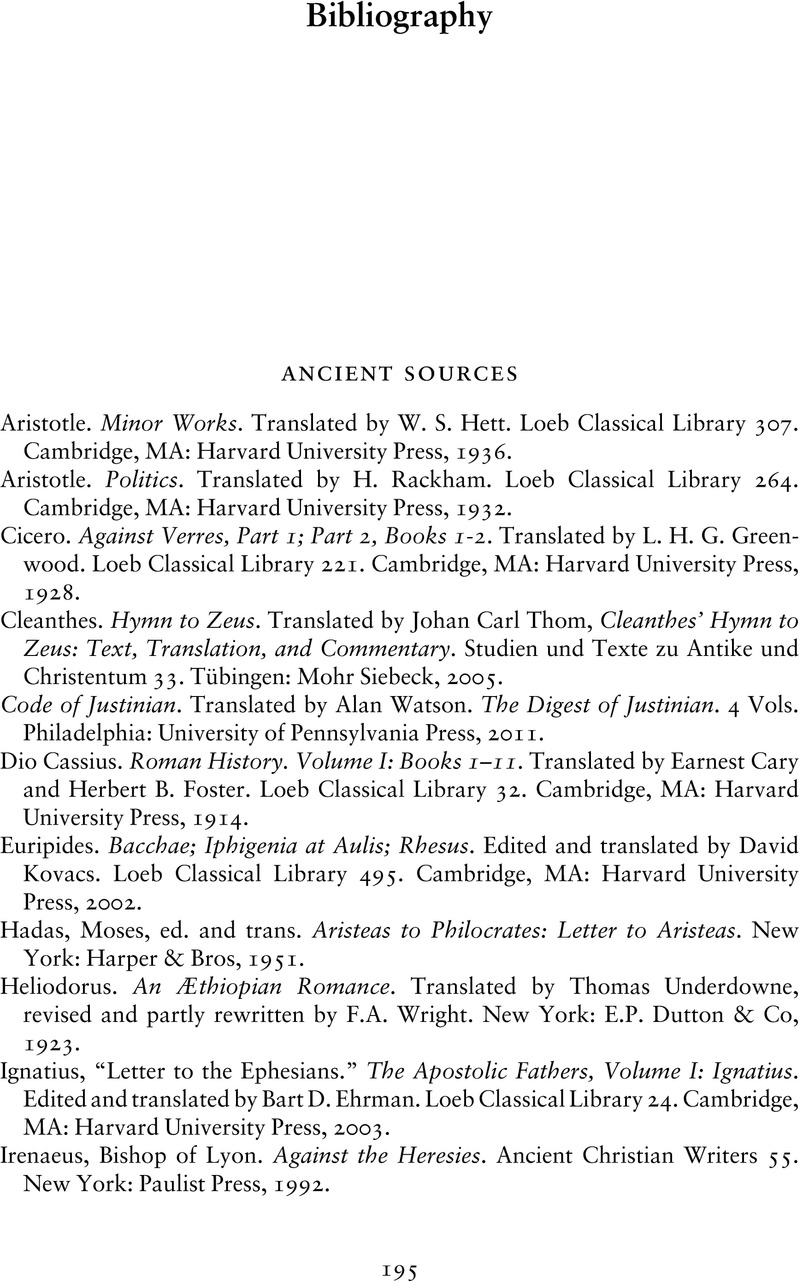 Criminalization in Acts of the Apostles
Criminalization in Acts of the Apostles Bibliography
Published online by Cambridge University Press: 12 October 2023
Summary

- Type
- Chapter
- Information
- Criminalization in Acts of the ApostlesRace, Rhetoric, and the Prosecution of an Early Christian Movement, pp. 195 - 216Publisher: Cambridge University PressPrint publication year: 2023
